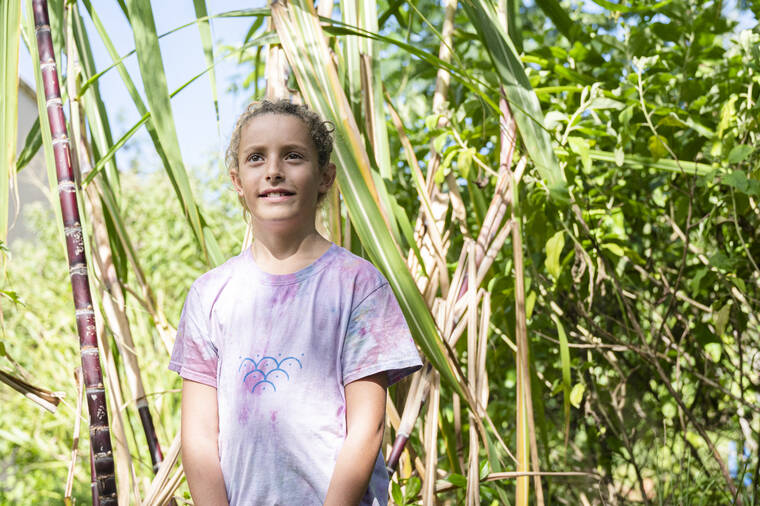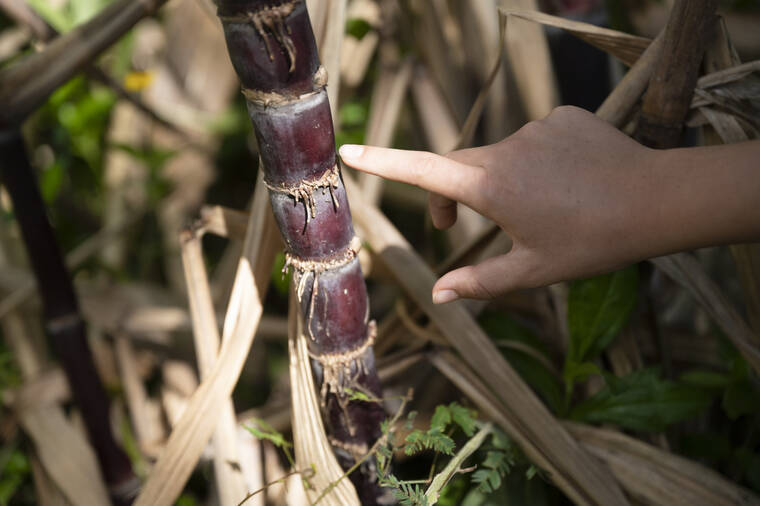KOLOA — Three Alaka‘i O Kaua‘i Charter School students are preparing for liftoff.
In May, NASA astronauts will assist them in delivering a sugarcane-research project to the International Space Station.
The project is part of the school’s most-recent project-based learning venture, “Dream Up to Space.”
Fourth-grade students part of Team Ko include Omar Maes, Persais Sasil and Hudson Sherrill. Together, they designed the experiment that will explore how sugarcane grows in a zero-gravity environment.
The team is hoping to fundraise enough money to go to the Kennedy Space Center in Florida, present their project and watch the May launch. Classmates will communicate their experiment protocol directly to the astronauts at the space station. They will also replicate the experiment in their Kaua‘i classroom for comparison.
Alaka‘i O Kaua’i Charter School is in its fourth year of operations as a public charter school focused on project-based and social-emotional learning. The “Dream Up to Space” is the first school-wide project the school has participated in, with every student designing a science experiment. Team Ko was selected as the final project. “Ko” Is the Hawaiian word for “sugar.”
Principal David Adams has enjoyed watching the school’s curriculum grow over the years.
“We’ve improved as instructors and as facilitators and leaders in project-based learning. So have our keiki,” Adams said. “Every year, the level of their projects, their questions, their methods, continues to get better and better.”
In a project-based-learning setting, students take the lead and decide the direction of their projects. Some of the youngest students were interested in sending a cupcake into space. Team Ko set their sights on an agricultural project because it better met their personal interests.
“We wanted to do something from Hawai‘i,” Maes said. “We knew sugarcane was a fast-growing grass so it wouldn’t take a long time to grow.”
Sugarcane already grows on the school grounds mauka of Maluhia Road (Tree Tunnel). On Monday, Maes left his classroom to inspect the root growth on the school’s sugarcane stocks. After extensive research, he and his teammates determined that roots rather than seeds would be ideal to send into space.
Evidence of project-based learning is all over the school.
Second-grade teacher Malissa Phillips’ students are currently working on revitalizing some of the school’s gardens, planting vegetables that will one day be enjoyed by the school community.
The garden beds sit about one hundred feet away from the outdoor classrooms that were designed by fourth-graders last school year in response to the pandemic.
“It’s really fun because the kids realize that their learning is for the community,” Phillips said.
The projects are designed to be interdisciplinary and include math and literacy components.
For “Dream Up to Space,” students did research and used their findings to determine the ratios of materials that would be sent to space in a Mixstix (a mixture enclosure tube for fluids, materials, chemicals and biological substances — all kept separate until they are ready to be combined in space).
Students created artwork for their presentation boards and filmed videos to share their projects with a panel of judges. They wrote up lab reports detailing their scientific methods.
Community experts contributed to the learning opportunities, too, including one volunteer from the U.S. Navy Pacific Missile Range Facility at Barking Sands, who came to the school to launch bottle rockets and talk to the kids about engineering.
“This incredible adventure isn’t possible without the good people of Kaua‘i,” Adams said. “So when we hit May and we’re looking at a live feed and watching that rocket ship go up, that’s got to be something for all of us.”



